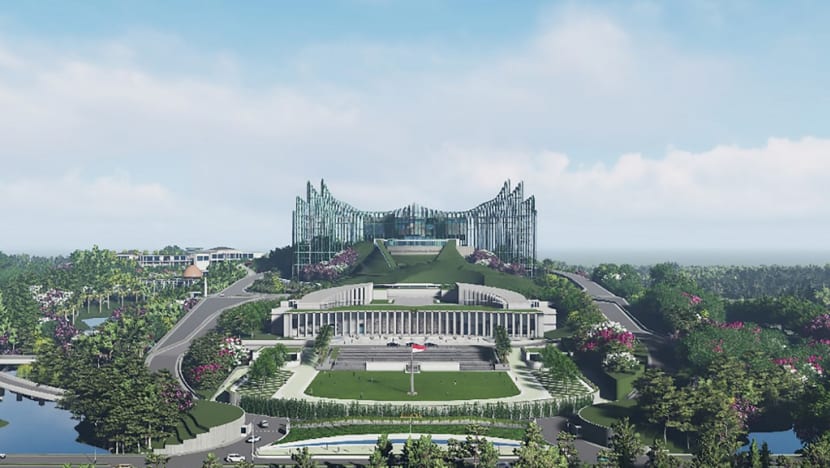Commentary: Indonesia’s new capital Nusantara can’t afford the tangled wires of Jakarta
The chaotic mess of cables dangling overhead is commonly seen in big Indonesian cities, but such immature planning can be avoided in Indonesia’s new East Kalimantan capital, say two researchers from Purnomo Yusgiantoro Center.

Street in Indonesia capital Jakarta, Jan 27, 2017. (Photo: iStock/AsianDream)
JAKARTA: The electricity cable system in Jakarta is estimated to be more than 80,000 km long, which is sufficient to circle the Earth more than twice.
With the city’s rapid growth of population and embrace of digital technology, this length will increase significantly every year, causing more complication to an already tangled installation of wires. Unfortunately, this challenge seems to be underestimated and not taken seriously in Indonesia.
A chaotic mess of cables dangling overhead is indeed a common scene along the streets in big cities across Indonesia - sometimes the jumble of wires strung atop is heavy enough to leave poles tilting. Electrical cables are frequently co-located alongside telecommunications, multimedia and data cables - the result of immature planning for cable installation.
Regulations were issued in 2021 in a bid to untangle part of this problem, requiring that the roll out of various new networks do not interfere with the electricity supply or the structural strength of power poles.
The regulation also requires consideration of aesthetics as a community good. Leaving aside complaints about pollution, the tangled wires make it hard for the public to enjoy the clear sky.

But the practical dangers are more pressing for pedestrians and nearby residents, such as the potential for electrical short circuits and fire hazards. Some outages have also been reported due to animal disturbances, including from birds and monkeys.
Public complaints over years have gone unaddressed, highlighting that the messy cables not only decrease the electricity supply but carry a cost for quality of living and national productivity.
AVOIDING URBAN PAINS IN NUSANTARA
In part to resolve Jakarta’s urban pains, the government has pledged to build a new Indonesian capital city Nusantara, in East Kalimantan. Nusantara will apply the “smart city” concept, using multi-utility tunnels for the installation of a host of public services, including electrical lines, fibre optical cables for telecommunications, and water pipes, taking lessons from cable deployments in developed countries, particularly in Japan and some European nations.
The goal in Nusantara is to no longer have a network of cables above the ground, which will minimise the need for public disruption.
Instead, a technician can easily do maintenance inside the multi-utility tunnels when a network needs to be fixed or replaced. A single control room with digital monitoring will also make it easier to track down leaks or damage within the system.
The concept has been used since 1850 for cable and pipe utilities under Paris. The Chiyoda district of Tokyo adopted a multi-utility tunnels system in 1926, which has survived significant earthquakes that have hit the city above.
A SOLUTION FOR LOCAL GOVERNMENTS?
The benefits for Nusantara will be tidy roads without tangled cables hanging overhead and a city less frequently disturbed by excavation work or electrical short circuits.
But the underground installation plan should be considered by local governments across Indonesia as a model solution to the problem of chaotic cables. Small steps in the meantime would be the strengthening of regulations around the use of power poles.
Planning is crucial, and the government must work together with stakeholders to support all regions in Indonesia’s infrastructure goal to become a smart, modern, safe and liveable nation.
Hidayatul Mustafidah Rohmawati is a research staff and Akhmad Hanan is a researcher at Purnomo Yusgiantoro Center, a non-profit organisation in Jakarta. This commentary first appeared on the Lowy Institute’s blog, The Interpreter.
















